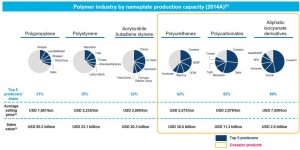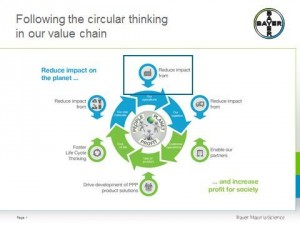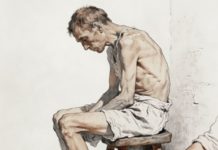This artickle appeared in the 9-23 November 2015 edition of Business India on page Nos. 64-65. The pdf version of the article can be downloaded from here: 2015-11-09_BusinesssIndia-Covestro
Bayer spawns Covestro — and a star is born
Covestro plans to carry on the legacy laid down by Bayer, in a more focussed and sustainable way
 Covestro was ‘born’ in October 2015. But not as a newborn. Till the first week of September this year, it was part of a larger company – Bayer ag. Two years ago the German conglomerate decided to spin off one of its business areas and give it an independent life and identity of its own.
Covestro was ‘born’ in October 2015. But not as a newborn. Till the first week of September this year, it was part of a larger company – Bayer ag. Two years ago the German conglomerate decided to spin off one of its business areas and give it an independent life and identity of its own.
On 6 October, Covestro (headquartered in Leverkusen, Germany)
made its debut on the Frankfurt stock exchange. Covestro’s businesses were earlier Bayer’s Material Science Division, but now have an independent identity. The proceeds from the public issue are expected to be in the region of €1.5 billion which Covestro plans to use to repay its debt to the Bayer group and thus achieve the
targeted investment-grade rating.
 At present the IPO has resulted in almost 25 per cent of Covestro’s shares being held by institutional investors. Soon, similar disinvestments to institutional investors in the UK and the US will also follow, which could see almost 34 per cent of Covestro’s shares
At present the IPO has resulted in almost 25 per cent of Covestro’s shares being held by institutional investors. Soon, similar disinvestments to institutional investors in the UK and the US will also follow, which could see almost 34 per cent of Covestro’s shares
being held by ‘outsiders’ (thus leaving Bayer with a 66-70 per cent holding in the newly formed entity). The listing was preceded by a book-building process lasting two weeks – in an increasingly deteriorating and volatile capital market environment.
“We are proud to now be a listed company,” said Patrick Thomas, CEO, Covestro. “It puts us in an even better position than before, enabling us to build on our strengths in the global competitive arena. We intend to share our business success with our investors and will therefore pay them a dividend from the start.”
 Thomas and Frank H. Lutz, CFO, were on the trading floor at the Stock Exchange to celebrate the initial share price in the traditional way – by ringing the bell. To reflect Covestro’s colourful new image, the trading floor was decorated with thousands of coloured beakers and a sculpture of a bull to symbolise increasing share prices – all specially made from high-performance polycarbonate, one of Covestro’s main products.
Thomas and Frank H. Lutz, CFO, were on the trading floor at the Stock Exchange to celebrate the initial share price in the traditional way – by ringing the bell. To reflect Covestro’s colourful new image, the trading floor was decorated with thousands of coloured beakers and a sculpture of a bull to symbolise increasing share prices – all specially made from high-performance polycarbonate, one of Covestro’s main products.
The company also develops and manufactures components for high-quality polyurethane foams, for coatings, adhesives and sealants, and for specialty products. These are used in many key industries such as the automotive, construction and electronics industries. They are thus found in almost all areas of modern life.
 With the latest six month sales (ending June 2015) at around
With the latest six month sales (ending June 2015) at around
€6.2 billion (9.5 per cent higher than the corresponding period in the previous year) Covestro is among the world’s largest polymer companies. During fiscal 2014, its net sales stood at €11.8 billion. The Covestro group has 30 production sites around the globe and employed approximately 14,200 people at the end of 2014. Today, Covestro straddles the entire industry almost as a giant. And it hopes that it will continue to grow even more.
In sharp contrast Covestro in India is much smaller. Its sales are
estimated to be around $253 million – but is expected to grow by at least 24 per cent year-on-year.
Much of the revenues – both in India and overseas – are expected
to come from its insulation related products – notably polyurethanes – which can save energy of up to 40 per cent for houses, refrigeration and even offices.
Across the world, Covestro’s business activities are focussed on the manufacture of high-tech polymer materials and the development of innovative solutions for products used in many areas of daily life. The main segments served are the automotive, electrical and electronics, construction and sports and leisure industries.
The decision to hive off Covestro was partly to unlock value by giving an independent existence to a division where Bayer was the acknowledged global leader. It was also because Bayer wanted to
focus more on “Life Sciences” – the name it gave to its pharmaceutical and agrochemicals businesses. Moreover, since regulatory clearances for agrochemical products usually took
a lot longer than ‘polymer-based products’, there was good reason
to leave this business to an entity which would be able to follow a
different product development cycle with shorter regulatory clearance windows.
 There could be another reason as well. Covestro expects this industry to grow phenomenally. That could require more capital investments – in excess of the €670 million it spent last year. Chalking out an independent identity would allow it greater recourse to funds, without being restrained by any other competing pressures within the Bayer group.
There could be another reason as well. Covestro expects this industry to grow phenomenally. That could require more capital investments – in excess of the €670 million it spent last year. Chalking out an independent identity would allow it greater recourse to funds, without being restrained by any other competing pressures within the Bayer group.
In any case, there is no denying that this division has tremendous
potential and had already notched up quite a few achievements for itself.
Safe production
Covestro has three business streams – polyurethanes (PUR), polycarbonates (PCS), and coatings, adhesives and specialities (CAS). The last has lots of untapped potential. Each of these divisions has a global presence – with production facilities throughout Europe, Asia and the US . They serve a diverse use of end-use products – from construction to automotive to electronics, it, medical and consumer goods.
Covestro caters to the basic chemicals industry: its offerings include
chlorine and its co-products. The company‘s strength is the safe production and its ongoing development of process technologies. It is among the world’s leading chlorine producers. Chlorine production is energy-intensive. Covestro is driving the development of efficient processes. Co-products such as caustic soda and hydrochloric
acid are sold and used in a variety of industries (foodstuffs, metal,
and paper).
The most important of Covestro’s impacts is of course greenhouse gas emissions. A management source speaks of how “our production facilities around the world use state-of-the-art technologies, but nothing that cannot be improved further. When we started our energy efficiency programme in 2008, we had no clue what target level for reduction to set. People told us 10 per cent is reasonable and can be achieved, but we didn’t want to be reasonable. We thought briefly about a 20 per cent target, but that did not seem
ambitious enough – we announced a 30 per cent reduction target”.
“Today,” he adds, “I can tell you we are this close to reaching a 40
per cent reduction compared to base year 2005 and we just recently
announced that we will raise the bar – again. This is achieved by constantly re-inventing our processes and our operations. We have introduced a bench-marking system across all major sites that allows us to drive continuous improvement throughout our organisation.”
“Our focus will be to move towards ‘zero’,” says Richard Northcote, chief sustainability officer, Covestro. We would like zero plastic to go to landfills and zero plastic to the oceans.”
The key resources that Covestro will be deploying to achieve this goal are its expertise in reducing the carbon footprint. Of special interest is what the management refers to as the “C1” technology, which has been under development for the past 30 years in Bayer’s laboratories. This technology involves the use of a catalyst, which actually manages to separate the carbon from the air and reuse it
in the making of new-gen plastics and polymers. While this has been done on a pilot scale till now, the company is confident of commercialising this invention soon.
In India, Covestro (as Bayer Material Sciences division) has been focussing on insulation, which can reduce energy costs by almost 40 per cent. To demonstrate how good their products are, it built an office in Noida which is already energy surplus.
But working with the Covestro brand will not be easy, at least in
the initial months. For decades, this division has been riding
piggyback on the Bayer brand. It will now have to educate its older customers, and even newer ones who are looking for the Bayer name, that Covestro is merely carrying on the legacy laid down by Bayer, but in a more focussed and sustainable way.










































COMMENTS